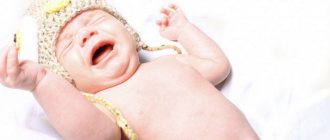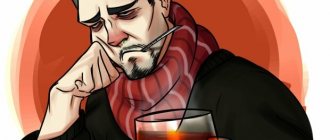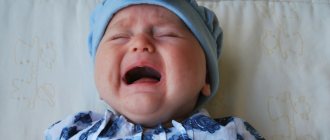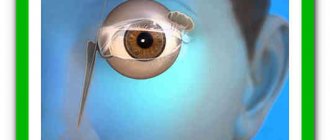Attention deficit hyperactivity disorder (ADHD) is a complex disorder characterized by excessive activity, constant distraction, and an inability to concentrate.
Children with this disease easily cross all established boundaries, and often even shock adults with their behavior. Faced with such a diagnosis, parents, first of all, want to know how the disease manifests itself, what its features are, and, most importantly, how to help children overcome the difficulties associated with it and fully socialize in society.
Who is a hyperactive child?
A hyperactive child is a baby who is distinguished by his increased activity. He cannot sit still, constantly moves, gets emotional, and does not complete things because he is easily distracted by other activities or sounds. Such children are quite impulsive, that is, they practically do not think about the actions they take and do not understand why others react negatively to them.
A child with hyperactivity disorder, or ADHD syndrome, is easy to distinguish among his peers. He is constantly on the move. Moreover, he needs new emotions, experiences, a quick change of activity. By and large, these children are no different from others, however, due to restlessness and high activity, they may have problems with learning. Although such children may stand out for their high level of intelligence or be at the level of others.
Hyperactivity is observed in only 5% of children. This is a fairly low figure, which tends to increase. Boys most often become hyperactive, and the syndrome is observed from an early age.
Hyperactive children do not always need treatment, since their behavior is a consequence of improper parenting. However, when the process has started and the parents can no longer do anything, they should use psychotherapeutic services.
Doctors identify the reasons for the development of hyperactivity:
- Unfavorable conditions during pregnancy. The mother smoked, took medications, led an unhealthy lifestyle, and was constantly exposed to stress. All this affects the development of her baby.
- Birth consequences that affected the neurological component of the child. If there was a lack of air, suffocation, the birth was too slow or, conversely, rapid, and it was necessary to resort to labor stimulation, then the child may also experience hyperactivity.
- Life of a child in a family. Improper upbringing using hard or soft methods, poor nutrition, conflicts in the family or with the child, temperamental characteristics, unfavorable family conditions - all these factors also affect how the baby will grow up.
go to top
Treatment of pathology
Parents need to strictly understand how to deal with this pathology. Treatment includes:
- psychotherapy;
- psychological and pedagogical adjustment;
- drug therapy;
- non-drug methods.
The following recommendations from doctors should be taken into account:
- gentle teaching (small class, dosed tasks, shortened lessons);
- good sleep;
- proper nutrition;
- normal physical activity;
- long walks.
Preference is given to non-drug methods of treatment. However, what to do if the methods taken were ineffective? In this case, the choice is on drug treatment.
Physical activity
When choosing sports games for a child with ADHD, try to avoid competitive elements. Games with statistical loads or demonstration performances are not recommended for children.
Swimming, aerobic training, cycling, and skiing will be of great benefit.
Psychological help
Various techniques have been developed to demonstrate how to cure the pathology.
They are aimed at reducing anxiety and increasing communication skills.
The psychologist will tell you how to reduce the child’s aggressiveness.
By simulating various situations of success, he will help you choose a specific area of activity in which the child will feel confident enough.
Under the guidance of a psychotherapist and psychologist, special autogenic training, individual, family, and behavioral psychotherapy are carried out.
In correctional work, it is necessary to involve almost the entire environment of the child - parents, educators, teachers. Special exercises are developed individually to develop memory, speech, and attention.
A speech therapist can tell you how to treat serious speech disorders.
Drug therapy
Drugs are prescribed as auxiliary methods of correction.
For effective treatment, a stimulant may be prescribed. This medicine for pathology is recommended for complex forms of the disease. It helps the patient ignore distractions and improve concentration. Popular drugs are:
- Adderall;
- Dexedrine;
- Concert;
- Focalin;
- Ritalin;
- Methylin;
- Vyvanse.
The doctor may recommend other tablets for the pathology. Quite often, nootropic medications are prescribed:
- Cortexin;
- Gliatilin;
- Encephabol;
- Phenibut;
- Pantogam.
Use of folk remedies
The fight against pathology with folk remedies can bring additional positive effects. However, remember that it can just as easily harm the baby. Therefore, be sure to consult your doctor before use.
It is recommended to treat children with medicinal herbs such as lemon balm and chamomile. You can use special sedatives.
Signs of a hyperactive child
A hyperactive child is not so easy to distinguish. Firstly, the child may be normal, but at some stage he becomes very active. Secondly, its manifestations may be the result of another neurological disorder. In any case, you don’t need to make a diagnosis yourself; let a specialist do it, who will identify the following signs in the child:
- The first symptoms that appear in infancy: prolonged wakefulness, poor nutrition and sleep, violent reaction to games, light, sounds, excitability, lag in the development of motor skills.
- At the age of 3 years, when the baby changes dramatically, capriciousness, chaotic behavior, awkwardness, fussiness, stubbornness, delay in mastering speech, and mood swings become very pronounced in a hyperactive child.
- Health problems arise when a child complains of nervous tics, headaches, enuresis, and fatigue.
- Restlessness begins to manifest itself clearly when the baby finds himself in an environment outside the family. It is impossible to feed him, put him to bed, sit him on the potty, or keep him calm.
- A child under 7 years of age develops attention and memory. A hyperactive child has a learning disability not due to underdevelopment, but due to the fact that he cannot concentrate his attention on one thing, on the teacher during training. When the baby already goes to school, he becomes unable to sit for 45 minutes.
- Psychological aspects are manifested in the fact that from an early age he begins to develop distrust, anxiety, irritability, tearfulness, and suspicion. He develops phobias that can last a lifetime if they are not addressed.
- Antisocial behavior in adulthood can cause hyperactivity in a young age, when it is quite difficult for a child to establish contacts with other children, since he is conflictual, aggressive, impatient, and uncommunicative. Often these children develop low self-esteem.
- Aimless, varied, quickly replacing each other movements. Reluctance to listen to fairy tales, inability to combine words into phrases, desire to pull everything into one’s hands, intolerance.
- Decreased appetite with a constant feeling of thirst.
- Talkativeness, clumsiness, which is why the child constantly drops everything or hits everything. There are difficulties in performing actions that use fine motor skills.
- Inconsistent, disobedient, restless, stubborn, illogical, clumsy, absent-minded, sloppy.
Hyperactivity should be considered holistically. All children are sometimes conflicted, uncommunicative, or academically unsuccessful. However, these symptoms may be isolated. Hyperactivity manifests itself in a complex of symptoms.
Psychiatrists believe that hyperactivity can only be diagnosed when a child reaches 5-6 years of age, since at an early age these qualities can be natural characteristics. In adulthood, some symptoms disappear, but lack of concentration remains.
go to top
Autistic form of ADHD
“It doesn’t look like hyperactivity.” This is a latent form of hyperactivity in which the child exhibits autistic elements of behavior. This form is more often observed in girls of primary school age. With it, the first thing that stands out is a strong distractibility of attention - it is as if the child is not present in the lesson. He strives to know everything around him: the pictures on the wall of the classroom, the number of crows on a branch (it was thanks to such schoolchildren that the saying “counting crows” came about). Along with such diffuse attention, strong motor activity is observed in parallel - he can tear pieces of paper to shreds, take apart a pen, dangle his legs under the table. If he touches neighboring chairs and interferes with other children, he does not realize this, since he often does this not arbitrarily.
What is the problem with these children?
- Due to absent-mindedness, a child often finds himself in unpleasant situations, ranging from a paste rod suddenly leaking out in class, to the fact that while distracted by foreign objects, he risks losing his own.
- Does not absorb information in class because he simply does not listen to the teacher. This becomes a significant obstacle to quality knowledge acquisition.
- Inattention can have a detrimental effect on a child’s independent travels - he will simply miss his stop on the transport and risk ending up in the wrong place.
- The first stage of the formation of personal irresponsibility.
What to do if a child is hyperactive?
If a child is hyperactive, then you need to use professional services, which will primarily be aimed at restoring a favorable climate within the family of parents and child. The child must be treated with patience, understanding, and calm. There should be no quarrels between parents, and their attitude and upbringing should be almost the same.
Parents should increase their child’s self-esteem, help him remain calm and focused, and develop respect for himself and others.
Parents should develop a daily schedule for the baby, when he will complete all planned activities and work. There is no need to proceed to work if the previous one is not fully completed. You should strictly adhere to the daily schedule and not change it just because the baby doesn’t want to do something.
go to top
How is hyperactivity syndrome treated in children?
After confirming the diagnosis, the doctor prescribes therapy and selects an activity program to correct the child’s hyperactivity. Treatment consists of the following activities:
- Taking medications.
- Physiotherapeutic procedures.
- Folk methods.
- Biofeedback therapy.
- Games and activities.
Medicines for hyperactivity are prescribed only as a last resort. When alternative methods are powerless, and excitability progresses over time.
Treatment of hyperactivity in children with medications
The main drugs prescribed for hyperactivity disorder and attention deficit disorder: antidepressants, psychostimulants, nootropics, sympathomimetics. Let us consider in the table what means are used to improve the condition and what effect they have:
| Type of drugs | Action of funds |
| Antidepressants | Improve metabolism and signal transmission to brain cells. Increases attentiveness. |
| Psychostimulants | They normalize brain activity, relieve excitability, aggressiveness, and impulsiveness. |
| Nootropics | They help provide the brain with oxygen, improve tone, nutrition and glucose absorption. |
| Sympathomimetics | They have a beneficial effect on blood circulation and normalize intracranial pressure. |
The products are used only as prescribed by a doctor.
Physiotherapeutic procedures
Therapy is carried out in a reduced dosage to avoid addiction and side effects. Studies have shown that taking medications improves the child’s condition. However, after stopping use, symptoms return.
Physiotherapy is prescribed to normalize blood circulation, reduce tension, and also to recover from birth injuries to the spine or head.
Physiotherapy for child hyperactivity
Basic procedures:
- Infrared irradiation . Spasmed, tense muscles are warmed up by exposure to infrared rays. 15 sessions are conducted 2 times a year.
- Warming up with paraffin. The therapy is also based on the effects of heat and improves the transmission of nerve impulses. A course of 20 procedures is repeated twice a year.
- Physiotherapy. It is carried out to strengthen the spine and shoulder region. Performed daily.
- Massage. Normalizes blood circulation and prevents increased intracranial pressure. Conducted in courses: 10 daily visits 3 times a year.
It is recommended to organize complex procedures, but only after the approval of the orthopedist and neurologist. A preliminary X-ray examination is carried out.
Treatment of hyperactivity with folk remedies
When treating hyperactivity using folk methods, soothing herbal preparations, decoctions, and infusions come to the rescue. Popular means include:
- Herbal teas. Melissa, chamomile, mint - brewed together or separately. Plants relieve increased excitability.
- Aromatherapy. A few drops of mint, lavender or incense essential oil are added to the aroma lamp and lit while the baby sleeps. The procedure calms the nervous system and develops concentration.
- Tinctures. A solution with the addition of lemongrass, leuzea or ginseng acts as an antidepressant. When taken, learning ability and concentration improve, and the overall tone of the body increases.
Folk remedies for child hyperactivity
It is important to understand that natural, natural remedies do not always act positively. In individual cases there are contraindications. Therefore, you should consult your doctor before use.
Biofeedback therapy or biofeedback method
Biofeedback therapy is an innovative treatment method that affects bioelectrical brain activity. The procedure is carried out using the BOS-LAB hardware and software complex. For therapy, sensors are installed at special points on the body. The child is asked to complete computer tasks while monitoring his biorhythms on the monitor. The program is equipped with feedback in the form of graphic and sound signals.
Classes are held in a playful way and are well received by the child. The procedure stimulates concentration, increases attention, and reduces hyperactivity. School-age children's academic performance is improving.
Recommended number of sessions: 15–25. The result is noticeable after three sessions, there are no side effects. Biofeedback therapy helps 95% of patients. The effect lasts up to 10 years; cases of complete relief from the syndrome have been recorded.
Biofeedback therapy for child hyperactivity
Correction of hyperactivity in children with activities
To eliminate hyperactivity at home, you must follow the advice of a doctor. Expert recommendations:
- Establish a close connection, relieve tension, relieve the child of anxiety by changing the attitude towards him on the part of parents and relatives.
- You need to have calm, restrained conversations, give positive attitudes, praise and support all attempts to improve. Avoid strict refusals and prohibitions.
- It is important to help your child feel self-control. To do this, you need to give clear recommendations and small tasks so that he can concentrate and complete the work he has started.
- Strict adherence to the daily routine is required, completing planned tasks strictly according to schedule, within the allotted time.
- It is necessary to reduce exposure to noisy, crowded places, limit long-term communication with restless peers and constant access to computer games that cause excitability.
- It is worth devoting more time to creative activities: drawing, modeling, playing musical instruments. It is useful to listen to classical music. This relieves emotional stress.
- It is recommended to organize games to develop attention, perseverance, and memorization. For example: “find the difference”, “silent”, “edible and inedible”.
- Physical activity in the form of walking, participating in sports, running, and exercise is encouraged. It is important to direct energy in the right direction, but avoid overwork.
Classes with a hyperactive child
Therapy using procedures and prescribed medications is only part of all measures. It is important to understand that treating ADHD requires a comprehensive approach. The disorder develops and progresses quite quickly. The child’s future life, associated with learning and perseverance, can become very difficult. But if you follow the above rules, the condition can be taken under full control, the number of symptoms can be reduced by surrounding the child with warmth and care.
It is important to understand that the baby is not to blame for his hyperactivity. Attention deficit is not a whim, but a desire to receive support. After all, no therapy method can replace the most important healing force - the love of parents.
Working with hyperactive children
The specialist works with hyperactive children in three areas:
- Working through anger.
- Development of control over movements, reactions and attention.
- Developing skills for interacting with peers and adults.
The work begins with working out one particular function. First, they work with the child individually, then move on to group classes. An acceptable form of work is play, which is best perceived by a hyperactive child.
Undoubtedly, teachers must take into account the characteristics of a hyperactive child and use various techniques when working with him. It is necessary to learn to communicate with such a child, withstand his desire to switch, and increase the level of motivation to do something.
go to top
Types of pathology
According to the dominant features, the following types of disease are distinguished:
- Attention deficit disorder without hyperactivity. There is a predominance of attention deficit. More often this pathology is observed in girls. The disease is characterized by wild imagination, withdrawal into one’s own world, and head in the clouds.
- Hyperactivity disorder without attention deficit. A rare type of pathology. The disease is caused by the individual characteristics of the child or certain disorders of the central nervous system.
- Attention deficit hyperactivity disorder. A pathology that combines impaired attention and hyperactivity. The most common form of the disease.
Recommendations for parents
Parents must create a stable and calm environment in the family so that the child can develop the necessary skills. You need to start with a daily routine that the child will stick to. Overwork should be avoided as it leads to irritability and moodiness. The baby does not need to be punished or criticized. If you don't like his behavior, learn to distract him with something else.
When raising a hyperactive child, you should not go to extremes. It is better to observe the golden mean, when both soft and hard methods of education are used.
It is better to praise your baby more often, especially if he really achieves something. To develop fine motor skills, it is necessary to offer your child various types of activities and even send him to clubs for dancing, drawing, modeling, etc. Increase your child’s self-esteem. To make him more diligent, do not rush him. At the same time, eliminate from everyday life all factors that can irritate and divert the baby’s attention to yourself.
It’s good if parents play various games with the baby, and also invite him to play with other children, so that at the same time he learns to communicate with them.
go to top
Possible consequences
Most parents naively believe that the baby will outgrow it over time. However, changes without treatment will be of little satisfaction. Symptoms of hyperactivity may worsen during adolescence.
Complications of advanced pathology are fraught with specific manifestations of physical aggression:
- beating;
- bullying by peers;
- fights;
- suicide attempts.
Many children are unable to successfully complete high school and enter college. At the same time, hyperactive children have an excellent level of development, often exceeding the average. Learning disabilities are associated precisely with a lack of concentration.
Hyperactive children often become creatively gifted individuals. It is known that such diagnoses were once made to Einstein and Mozart.
Bottom line
A hyperactive child is a diagnosis for some, but a normal phenomenon for others. Parents must understand the consequences of not having any influence on the child in order to change his behavior and ability to remain calm. There are a lot of methods for working with such children. You can use at least some of them so as not to take the situation to an extreme. After all, you should understand that all the skills and qualities acquired in childhood will be used by the child when he grows up. But hyperactivity will not always contribute to a person’s normal existence.
Causes of motor dysfunction syndrome (ADHD)
The mechanism of development of hyperactivity at this stage is not fully understood. However, experts dealing with this issue are inclined to believe that there are three factors in the development of this problem:
- Hereditary factor - as a rule, if you examine the pedigrees of children suffering from this syndrome, you can find that the closest relatives (usually on the same-sex line with the child) also had behavioral deviations of this nature. Often, the traits of a once hyperactive child can be seen in the behavior of the parents themselves - adults behave excessively fussy, bite their nails, knock on the table with their fingers or the first object that comes to hand, and are often hysterical and unrestrained.
- Mutation factor - is caused by an acquired change in one or a group of genes responsible for the formation of the child’s psyche. These transformations are possible both at the stage of formation of the germ cell and during intrauterine development.
- Behavioral factor - simply put, it is “pseudo-hyperactivity”. If you look at the psyche of such a child, then, most likely, nothing characteristic of ADHD will be found. Such children, as a rule, sympathize with fidgets and try to imitate them in every possible way. This phenomenon is most often observed in preschool and adolescence, when the desire to be like everyone else pushes a weak and indecisive child to copy the behavior of the “chieftain of the team” so as not to be ridiculed among classmates.
how to encourage a child
Diagnostics
If these symptoms are detected, you need to contact specialists who will subsequently treat hyperactivity in the child. You will need a consultation with a psychologist, neurologist and psychiatrist.
Do not be afraid to contact the last specialist who will examine the child and prescribe quality treatment. In addition to consultation with a doctor, MRI, blood tests, EEG and ECHO KG may be prescribed. During treatment, referrals to other specialists, such as a speech therapist or epileptologist, may appear.












